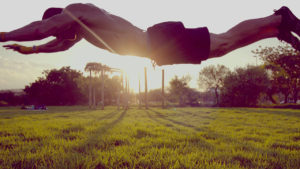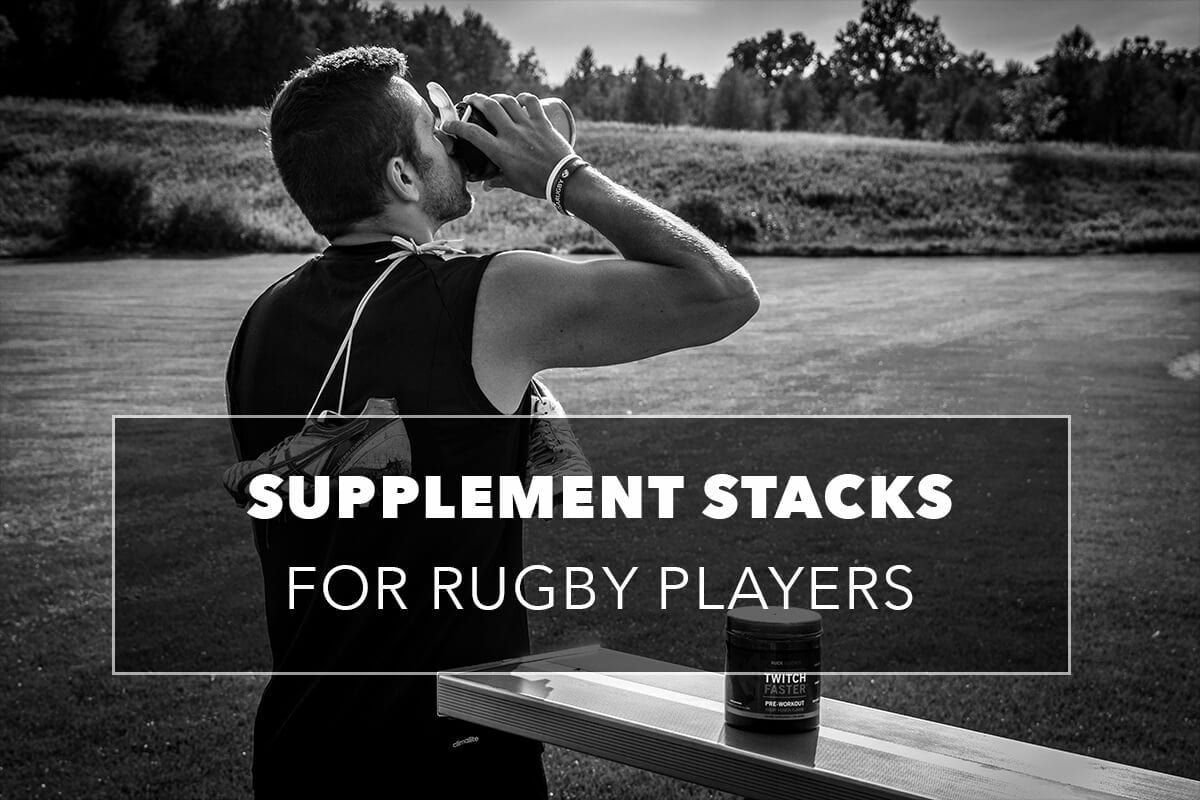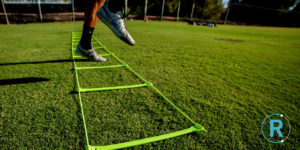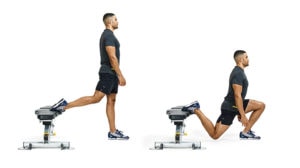Chaos is a state of disorder where a present condition or circumstance cannot accurately predict future conditions. Rugby is chaotic. It’s less like a symphony and more like a cacophony of beautiful violence.
This chaotic violence must be expected and must be trained for. The issues with normal barbell training for chaotic sport is that the barbell is evenly loaded, and the weight room is relatively the safest aspect of strength and conditioning for rugby players. Everything is easily controlled and accounted for.
So, how do we efficiently train for the chaos of a rugby game when we’re in the gym? Easy. The answer is the introduction of odd object lifting into our unconventional rugby training.
A simple definition of odd objects
Odd objects are… well… odd. Anything you can lift, carry, throw, slam, stack, or drag while exerting a significant force that isn’t a regular piece of resistance training equipment is technically an odd object. If you think about it as a physical challenge, odd object lifting is problem-solving with your body. Yes, you will need to think, and technique is key to everything, but this kind of problem-solving involves your sense of awareness in space. This short guide isn’t going to cover every aspect of odd lifting for developing rugby strength, but I am going to hit some major points, suggest some relative movements, and explain exactly what you’re doing with each one.
Sled Dragging
Equipment needed: Loadable sled, pulling strap, pulling harness.
An excellent starting point for implementing odd movements into your unconventional rugby training is by adding in a sled dragging program. Just a little caveat/rant here, sled dragging is not a great training tool for improving sprint speed/acceleration. The issue is that the starting position and initial footwork is tremendously different from a regular sprint. A regular sprint requires acceleration through taking advantage of the propelling forces of gravity.
Attaching a sled skews that propelling force by adding horizontal displacement and friction to the movement. All this means is that your acceleration angle will be much lower due to the support of the sled, and your footwork will be much too choppy to have any carryover to real, unloaded speed. So, with all that laid out, what exactly is sled dragging good for?
Sled dragging takes the majority of the eccentric stress (causes the majority of muscle damage during exercise and soreness after exercise) out of sprinting/walking. Since so much propulsion is needed concentrically, sled dragging is an excellent recovery tool when lighter weights and longer distances are used. Also, when performed correctly, sled dragging has excellent carryover to strengthening all of the muscles responsible for explosive hip extension.
Unconventional nutrition: it’s worth noting at this point that some of our lesser-known supplements like our cognitive enhancer or No2 booster might be useful in your unconventional rugby training.
How to implement: Start with two days a week. One day should be a lighter weight longer distance day. Basically, chose a weight that allows you to maintain and explosive “bounding” posture when pulling the sled. Distance can be anywhere from 400m to 1600m.
Here is a good example of explosive walking/bounding with a sled:
Day two should be much heavier and much shorter distances. Anywhere from 100m-300m and using a tough weight is ideal for this day. As far as technique here, my only suggestion is to do whatever you have to do to finish and try not to die in the process.
Variations: Another cool aspect of sled work is that you are basically only limited by your creativity when implementing it. Once the suggested two days a week program gets annoying, you could always add in some heavier carries with the sled as well. Add in weight vests or dumbbells along with the drag. My personal favorite is to hold on to an old rusted York Barbell 100lb plate.
If you are feeling especially masochistic, adding a secondary odd object while dragging could have significant carryover to the field. Two great variations are a sled drag with a tire flip and also a sled drag with a strongman log. The tire is pretty straight forward. You just flip the tire and drag the sled to where it landed. The log has a little more variability to it. You can carry the log (or barbell) in the rack position. Take a couple steps and press the log. You can drop it all the way down and clean and press it as well. You can even stop and perform a little complex of movements every 10m-20m. Again, you’re only limited by your creativity… and pain tolerance.
Sandbags
Equipment needed: Durable canvas bags and access to either steel pellets or sand.
These will definitely have the most functional carryover to rugby out of all of the other odd objects. With a sandbag, there is no comfortable hand position, no easy way to move it, and the constant shifting of the sand makes it impossible to anticipate. Sounds a lot like tackling or cleaning out a ruck, doesn’t it? I recommend having at least three different weights. A light bag for conditioning and recovery work, a medium bag for strength training and force production movements, and a heavy bag for carries. Now, the actual prescription of exercises for sandbags is basically infinite. Here are a couple of rugby-specific exercises that can be beneficial:
Sandbag clean and press. Just like is sounds, start with the bag on the floor, grab it, clean it, and press it. As far as sets and reps, I am a big fan of doing these for time and tracking total reps. Say you clean and press your medium bag 15 times in one minute. If you get 16 the next time, that is a quantifiable increase in your work capacity.
Sandbag get up. This is a weird one. Similar to a Turkish get-up, lay flat on your back with the bag lying across your upper body. Now, stand up without the bag touching the floor. This is a lot harder than it sounds. This requires an almost superhuman level of inter/intramuscular coordination as well as patience. Sets and reps? If the first one didn’t make you throw up, use a heavier bag next time.
Here is a kiler description:Sandbag Hindu Throw. Make sure your bag is durable for this one. This might be the single greatest hip extension exercise in existence. Start with the bag on the ground between your legs. Squat down and grab the bag. Immediately pull the bag up and forward. Once the bag gets to about shoulder height, continue pulling until the hips completely extend and throw it overhead, behind you.
Again, you can basically do any movement you can imagine with a sand bag. If you don’t want to fork out the money getting a pre-built one, here is an excellent instructional video on how to build your own:For more on sandbag lifting programs, checkout sandbagfitness.blogspot.com
It’s Hammer Time
Equipment needed: Sledgehammers or maces.
Other than being ideal for your best Paul Bunyan Halloween costume, sledgehammers can be an absolutely fantastic odd object for training. Swinging a heavy hammer utilizes every muscle in your body and is an unparalleled grip training modality. Here are a couple of great hammer exercises:
Levering. This exercise will single-handedly make sure you never miss a tackle again. Hammer levering is simple and brutal.
Swings/Slams. Make sure you’re hitting something that isn’t going to explode and throw shards into your body. Tires work well here. My favorite protocol here is to pick a hammer, pick a time, and just continuously swing and slam until the time runs out. This is a great modality for both recovery and conditioning. Don’t forget to switch sides and swing with your non-dominant hand as well. This has tremendous neurological benefits when working your non-dominant hand. Two loading protocols to get you started:
- Use a light hammer and hit a tire for 5 straight minutes, switch hands and go for another 5 minutes.
- Use a heavy hammer and do a Tabata interval (20 seconds of the most intense work you can do, 10 seconds of complete rest for 8 total rounds) and switch hands each round.
Again, this list is not the end-all-be-all of odd object training for rugby players, but it will definitely get you thinking and working in the right direction. Has odd object lifted benefitted your own pre-season rugby training? Do any of these exercises/modalities I listed look like something that could help you?
Let us know in the comment section below.





